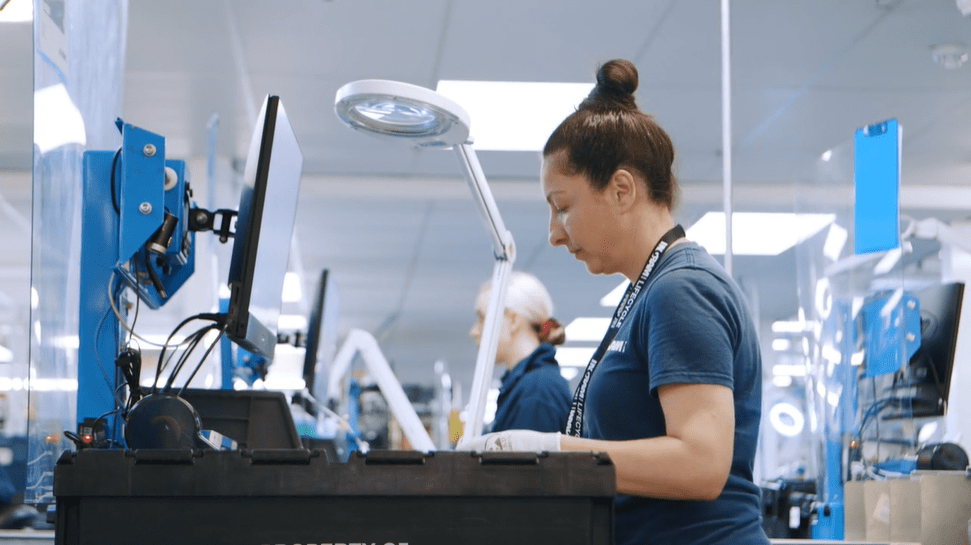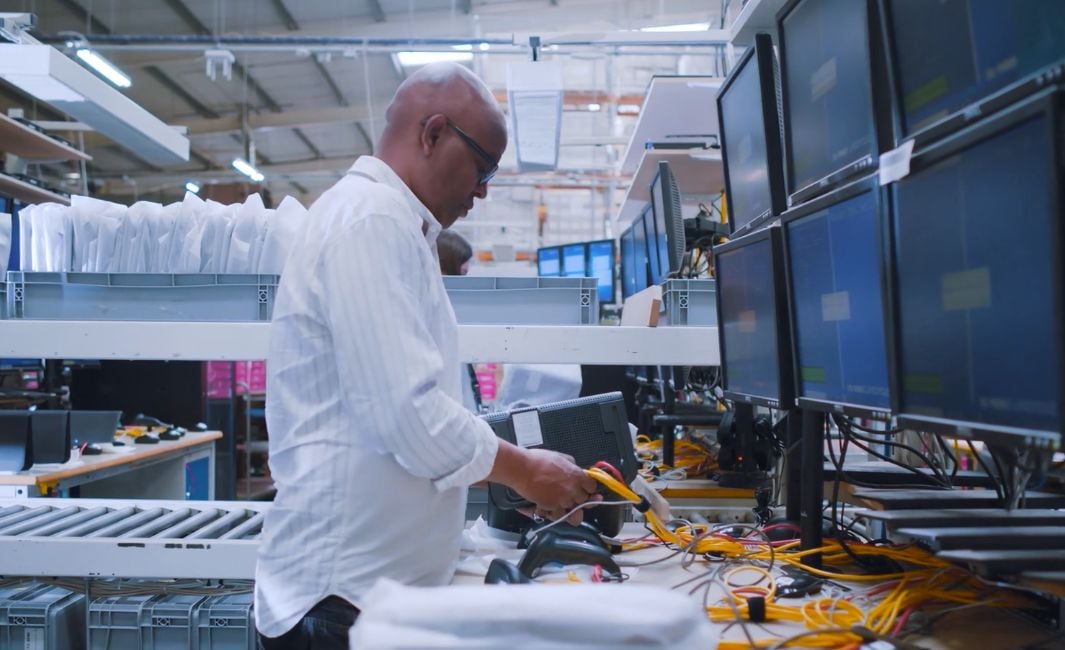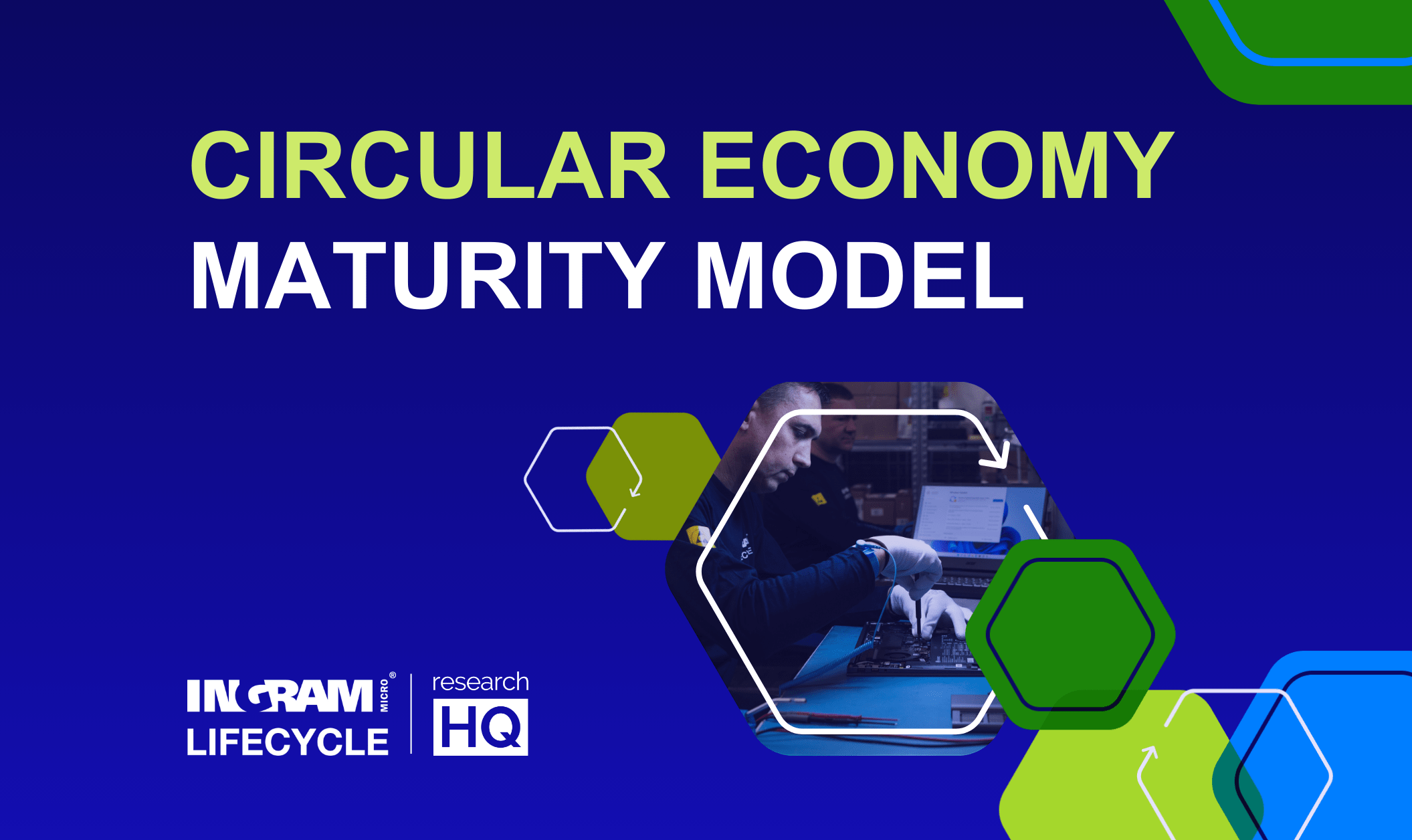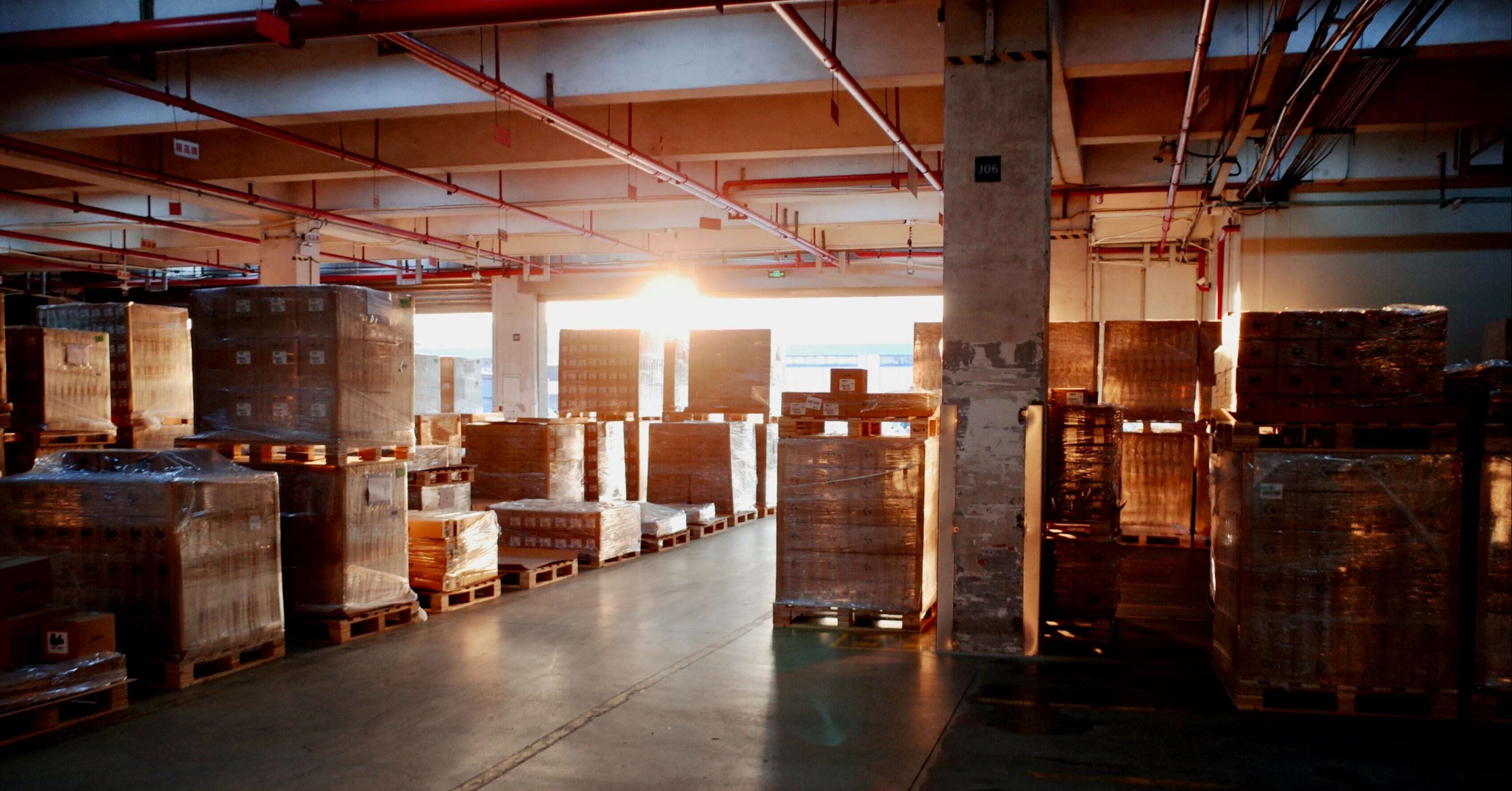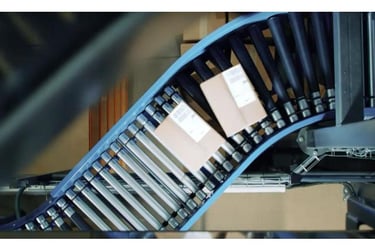Fraudulent returns are an expensive and persistent threat to consumer electronics brands. These often slip through the cracks of overstretched internal systems. Whether it’s high-value device swaps or empty boxes triggering automated refunds, scammers continually test the limits of a business’s return process.
Catch up on part 1 of our fraudulent returns series, which takes a closer look at what a fraudulent return is and the impact these have on businesses.
As a reminder of some of the fraudulent returns we’ve received on behalf of customers at Ingram Micro Lifecycle, you can see a collage of the greatest hits below.

Yep. You don’t need to go to that high street optician chain to get your eyes checked. Those are indeed lasagne sheets, baby wipes, soap, and a fire grill.
By working with us, our customers don’t need to go through the hassle of screening these products out, taking photos and making notes for evidence, or disposing of the waste. We take that responsibility from them.
A trusted returns management partner offers a line of defence that’s proactive, data-driven, and built to detect and deter fraud at every stage.
Read on to learn more about how a returns partner can take action to stop scammers getting a refund they don’t deserve. We explore how outsourcing returns to an experienced provider not only strengthens your fraud prevention strategy but also unlocks operational efficiencies and long-term cost savings.
Actions a returns management partner takes to screen against fraudulent returns
In 2023, the UK faced $14.6bn in losses due to fraudulent returns. 91% of retailers reported an increase in returns fraud, demonstrating that cases are more prevalent than ever.
Here are five ways a returns management partner supports you in mitigating against these fraud risks.
1. Physical checks
Physically checking the contents of a returned package is key before a refund is triggered. This is the first step in acknowledging whether the return is legitimate or not.
It happens not only with returns when the owner is within their cool-off period or claims there’s a fault, but also with trade-ins. For example, a customer may submit a trade-in of an iPhone 14, but they send an iPhone X. They’ve claimed to have a higher-value device to get a larger payment for their phone. There are a few cases where this may be a genuine mistake, but often it’s someone trying to play the system. These phones need to be quarantined ahead of a re-quote based on the actual device received before a payout is triggered.
The partner will check the product against the system to ensure that what’s received is what’s expected. If it isn’t, then they stop the refund or payment.
2. Electronic scanning
This is an efficient way to connect an order or returns request with the package received. The returns processor can scan the label and quickly see what’s expected. Their findings can be logged against the case file along with evidence, such as photos, for further investigation and follow-up with the customer. Contact center agents have visibility of these files, which prepares them for interactions with the scammer.
Having this technology makes it easier to build a fraud case with visibility across departments and reporting functionality. This data is passed to the manufacturer or retailer, working with the returns partner, for them to decide how to investigate.
3. Reporting
Regular updates to the brand on fraudulent cases provide insight into trends and patterns. Identifying these can support the brand in being more proactive about reducing fraudulent returns. This includes data around volumes, seasonality, geographies, etc. Along with electronic systems, this arms the business with as much evidence and information as possible.
4. Liaise with couriers
The partner will have a strong network among their courier partners. The data they collect from fraudulent returns can be shared with couriers to support their fraud prevention tactics. This ensures that fraudulent activities are being tackled from multiple angles and closing all exploitable gaps.
5. Advise and support
When a partner detects a loophole or potential issue with a returns policy or returns process, they will liaise with the brand to mitigate the risk of fraud. They’ll work with the business to close gaps and reduce the volume of fraudulent returns that are initiated.
Why outsource returns management rather than insource
Outsourcing returns management to a third-party partner provides a brand access to the infrastructure, resources, and experience that they don’t have, and may not want to have. Handing the pressure over frees up their time to focus on core business strategies and not be distracted by fraud.
The returns management partner liaises with the couriers on behalf of the business. They’ll learn their systems and can work closely with them to put fraud prevention tactics in place. This takes time and dedicated resources to do.
The partner will already have access to industry technology and software to support processing returns. They’ll have the trained personnel and procedures already in place for accurate checking of received packages and reporting. This activity takes additional time; processing each package, updating case files, liaising with couriers and contact center agents, and updating other departments, including Fraud Departments, Security, Depot Managers, etc. If insourcing, this would require research and investment from the business.
The experience and know-how that the partner has enables them to replicate a successful, streamlined process. Their focus will be on integrating with your business as seamlessly as possible, adapting to your systems and processes. You wouldn't start from scratch, as you would with insourcing. The partner knows what works and can advise and guide you. They will integrate with your software and digital infrastructure to provide supportive data, empowering you with as much information as possible on fraudulent activity.
They’ll have the agility to adapt to new channels you want to expand your business into and will innovate to improve sustainability and make cost savings without compromising on quality outputs. Their support will ensure changes don’t detract or deviate from your business strategy, and they can advise on progressing the new channel.
The partner will have the space to house your returns. If they don’t in the beginning, then it becomes their responsibility to find space to keep the returns protected until these can be processed. This takes the pressure off you needing the flexibility of having more space in peak sales/returns seasons and less space in slower periods.
It will be the responsibility of the partner to manage waste that results from the returns process. They’ll coordinate necessary waste management partners to recycle and sustainably dispose of packaging and other materials. They may have arrangements in place with waste carriers or will have a strong network of recommended suppliers they can engage.
Protect your brand against fraud today
Mitigating fraud requires more than just vigilance. It demands the right tools, processes, and expertise. A returns management partner brings all three, combining physical validation, digital tracking, actionable insights, and courier collaboration to protect your business from evolving threats.
By outsourcing, brands gain access to scalable infrastructure, established fraud protocols, and a team focused on reducing risk while preserving customer trust. Now is the time to reassess whether your current returns setup is working for you or against you.
Contact us to discuss your returns management challenges and learn how our solutions can be tailored to your processes and systems.
Related articles:
- Tackling fraudulent consumer electronic returns: part 1
- Techniques for uplifting value on returned products
- 7 ways a return policy influences consumer behavior
- Introduction to returns avoidance: tactics for a greener supply chain
- How does speed in returns processing influence value recovery?
- Benefits of a returns management partner
- Reverse logistics and recommerce revolution (report)



